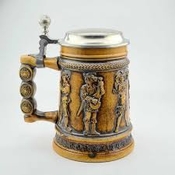Poor man's visual densitometer : take a piece of black cardboard and punch a couple of regular paper punch 1/4 inch holes in it about two inches apart. Set your sample negative atop and light box, referencing your target area through one hole, and a calibrated step tablet adjacent to it, visible through the other hole, sliding your step tablet back and forth until the two densities appear to match.
For beginner purposes, you want the threshold of shadow density to be about .15 above fbf (film base plus fog - as measured on the unexposed edge of the negative). You don't have to be exact for learning purposes. Pinning down reproducible shadow density first is important because we're dealing with the axiom, "expose for the shadows, develop for the highlights".
You might find it necessary to shoot a particular film at lower than box speed in order to get all the texture you desire in the shadow areas. But there is no "one shoe size fits all" rule because black and white films differ from one another in terms of their "toe" linearity, where shadow gradation occurs.
Correct highlight density is best determined by trial and error on test strips with your preferred printing paper. If you have trouble attaining enough contrast, you need to develop your film longer. If you get too much contrast, or if your highlights are blown out devoid of texture, shorten your development time.
Of course, this all pertains to your subject matter itself, and the specific contrast range of the scene. So it all takes some practice shooting and printing. Some people are help by thinking of all this in terms of Zone placement, some are not.






 Otherwise, you’re probably still Irish.
Otherwise, you’re probably still Irish.



